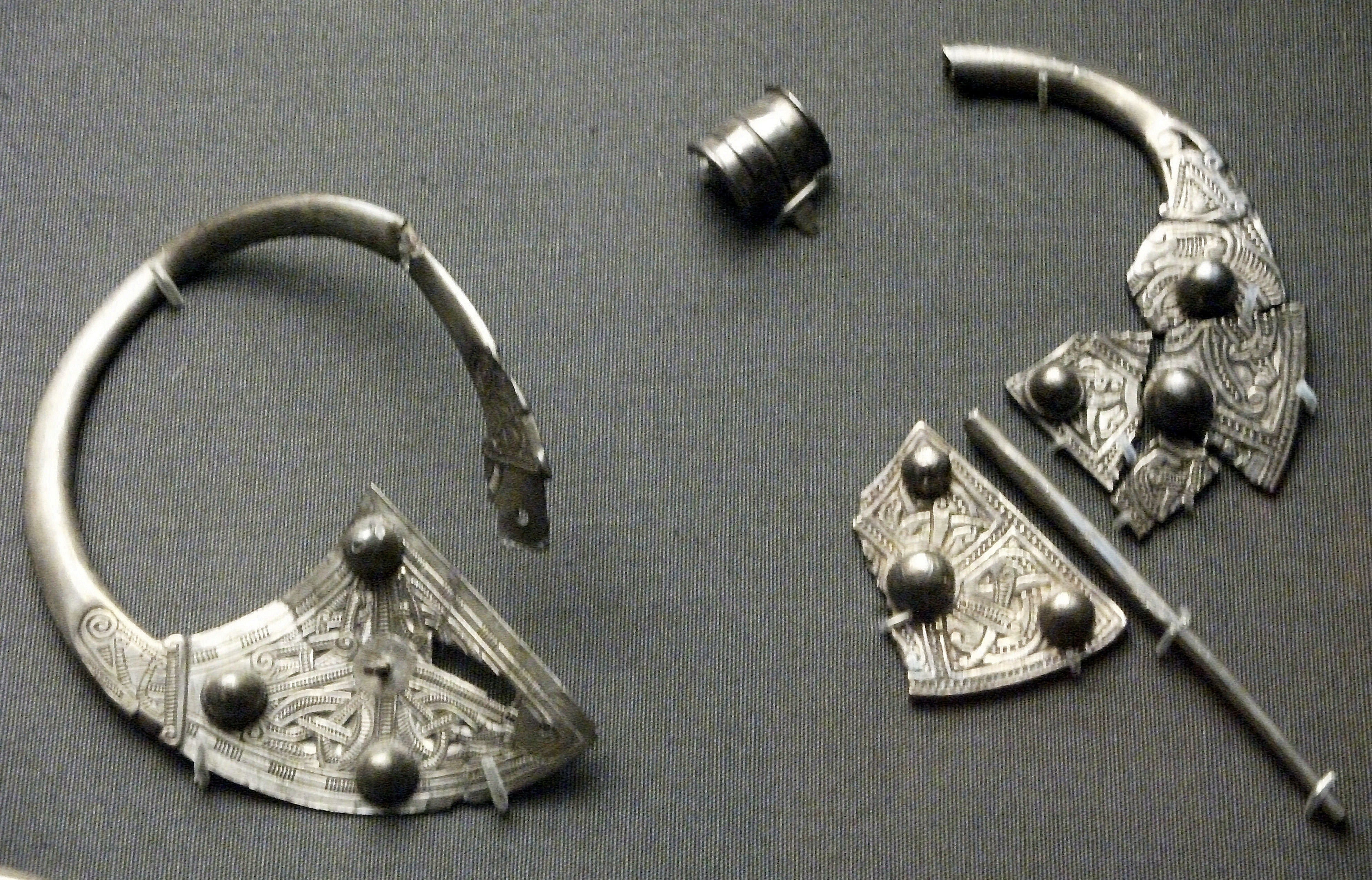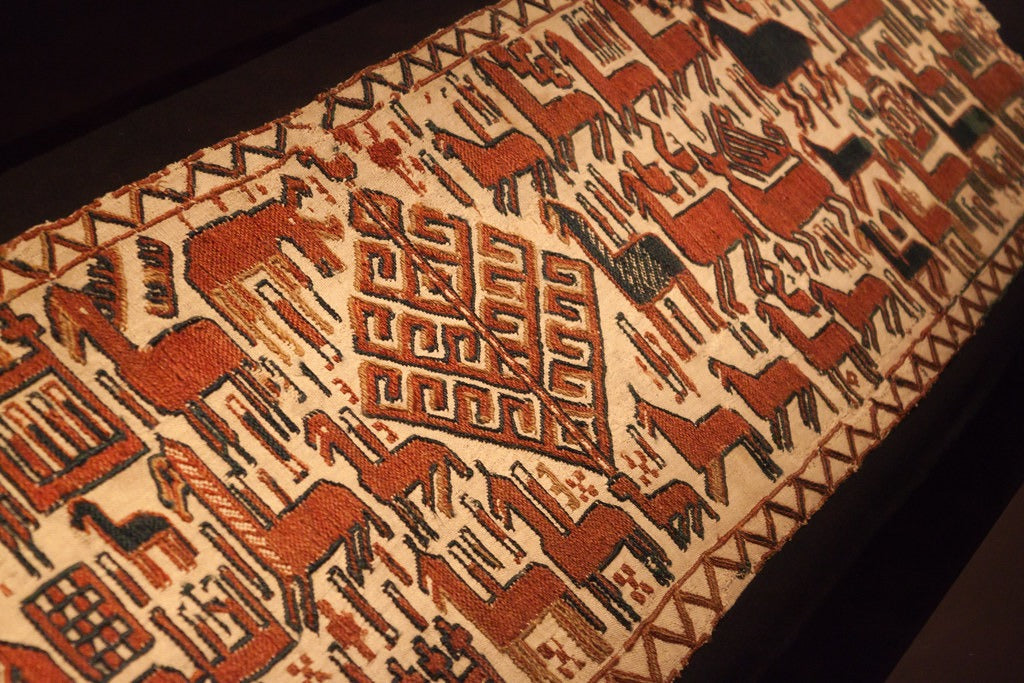
The Penrith Hoard: Viking Silver Wealth in Medieval Cumbria
The Penrith Hoard, in 1989 near Flusco Pike in Penrith, Cumbria, represents one of the most significant Viking-age silver hoards found in northern England. The discovery occurred during construction work approximately two miles from Penrith's town center, at a depth of about 30 centimeters below the surface. The location's proximity to known Viking settlement areas and ancient trading routes has provided valuable insights into Viking activity in 10th-century Cumbria.
Composition of the Hoard

A penannular brooch featuring "gripping beasts" connecting the ring to the terminals, with a runic futhark inscribed on the reverse side of the hoop. (Photo: Johnbod: CC BY-SA 3.0)
Silver Objects and Coins
The hoard comprises 190 silver items, including both complete and fragmentary pieces, representing one of the largest collections of Viking-age silver found in northern England. Among the complete pieces are twenty-seven arm rings of various designs and craftsmanship. These are accompanied by four arm ring fragments, demonstrating the practice of breaking down larger items into smaller, tradeable pieces. The collection also includes substantial amounts of hacksilver, consisting of one hundred and seventeen pieces of cut and broken silver items, along with six complete ingots. Of particular significance are fifteen pennies and penny fragments from the Anglo-Saxon kingdom, which have proved invaluable for dating the hoard. The latest coins date to approximately 930 CE, suggesting the hoard's burial occurred during the mid-10th century.
Ornamental Items
The arm rings within the hoard showcase exceptional examples of Viking craftsmanship and artistic styles. The pieces display intricate twisted wire patterns characteristic of Viking metalwork, alongside sophisticated punch-marked decorations that demonstrate advanced metalworking techniques. Ring-chain patterns appear frequently throughout the collection, while ribbon-twist designs showcase the artistic sophistication of Viking craftsmen. Many pieces exhibit distinctive Hiberno-Norse influences in their design and execution, providing tangible evidence of the cultural and artistic connections between Viking settlements in Ireland and northern England during this period.
Historical Context

The "brambled" terminal from the largest brooch (Photo: Johnbod CC BY-SA 2.0).
Viking Presence in Cumbria
The historical context of the Penrith Hoard emerges from a period of intense Viking activity in Cumbria, spanning approximately 850-950 CE. During this time, Norse settlers established significant communities throughout the region, as evidenced by place names, archaeological findings, and historical records. The area around modern-day Penrith served as a crucial junction for trade routes connecting the Irish Sea region with York and other major Anglo-Saxon settlements.
Archaeological evidence suggests that Viking settlers in Cumbria maintained strong connections with both their Scandinavian homeland and other Viking settlements across the British Isles. The presence of mixed Anglo-Saxon and Norse artifacts in the region indicates a complex pattern of interaction between these communities, ranging from peaceful trade to periodic conflict.
Trading Networks and Economic Significance
The composition of the Penrith Hoard reflects the sophisticated economic systems of the Viking Age. The presence of hacksilver alongside complete pieces demonstrates the dual nature of silver in Viking society - serving both as decoration and as a form of currency. The weight-based economy of the Vikings meant that silver could be divided and used for precise transactions, with pieces often cut to specific weights for trade purposes.
Scientific Analysis
Modern scientific examination of the hoard has revealed important details about Viking metallurgy and trading practices. Analysis of the silver content shows consistency with other Viking-age silver objects found across northern Europe, suggesting standardized sources and refining practices. Metallurgical studies have identified varying silver purities throughout the collection, with some pieces showing exceptionally high quality while others contain typical levels of copper alloy consistent with Viking-age silver working.
Surface examination of the artifacts has revealed tool marks and testing cuts, indicating that the silver was actively used in transactions before burial. These marks, known as "pecking," were made to verify the silver's authenticity and purity during trades.
Museum Display and Cultural Significance
Today, the Penrith Hoard resides in the British Museum, where it serves as a crucial resource for understanding Viking-age economics and craftsmanship. The collection provides valuable insights into the technological capabilities of Viking metalsmiths and the sophisticated nature of early medieval trade networks. Regular exhibitions of the hoard help educate the public about Viking presence in northern England and their lasting impact on British history.
References
"Brit Mus 17sept 013" by Johnbod is licensed under CC BY-SA 3.0.
"Penrith Hort 10 Jhd Cumbria" by Aiwok is licensed under CC BY-SA 3.0.
Graham-Campbell, James (2011). The Cuerdale Hoard and related Viking-age silver and gold from Britain and Ireland in the British Museum. British Museum Press.
Edwards, B.J.N. (2004). "Vikings in North West England: The Artifacts." Lancaster University Centre for North-West Regional Studies.
Williams, Gareth (2007). "The Circulation and Function of Coinage in Conversion-Period England, c.580-675." British Numismatic Journal 77.
Richards, Julian D. (2004). Viking Age England. Tempus Publishing.
Wilson, David M. (2008). The Vikings in the Isle of Man. Aarhus University Press.








